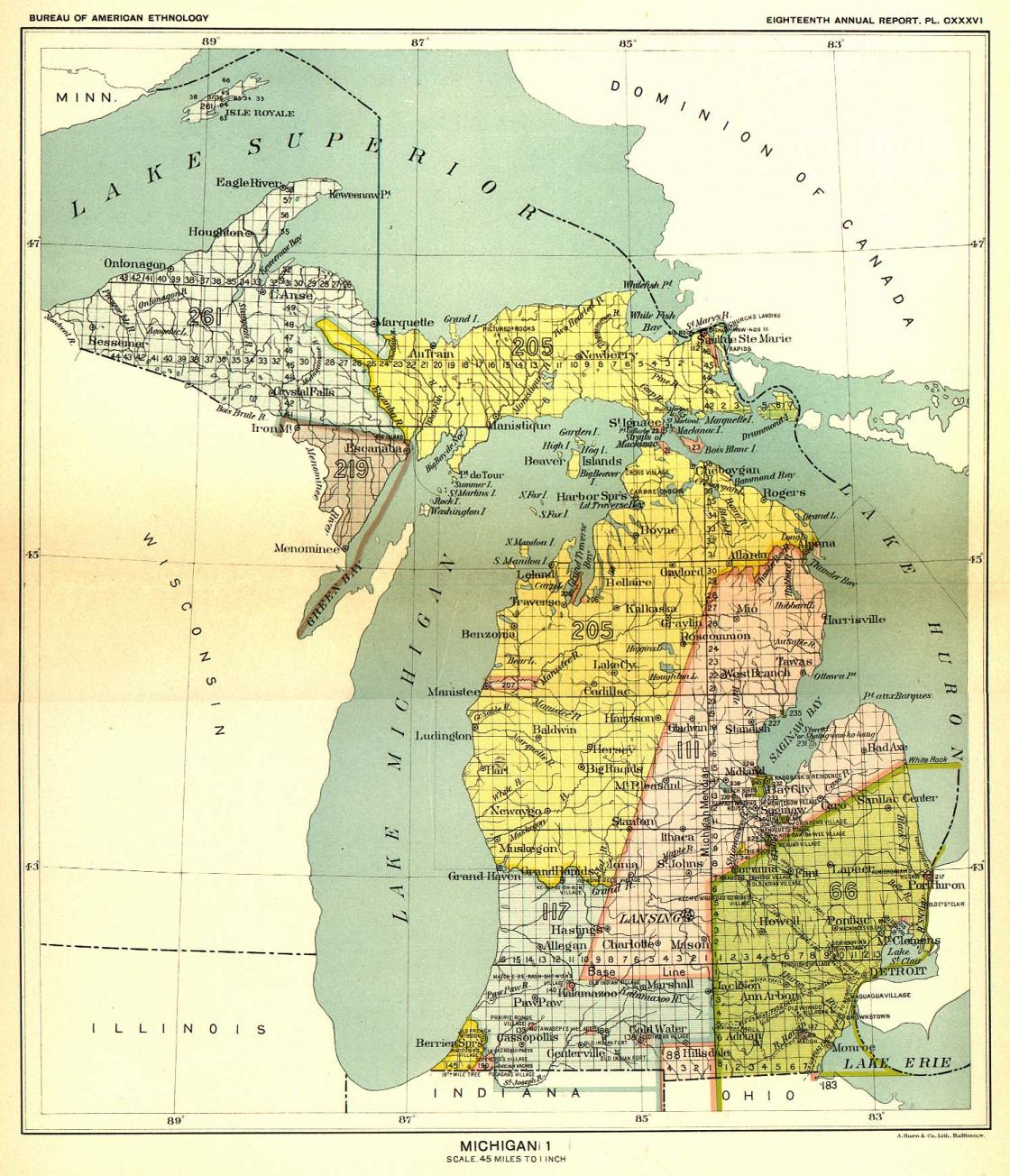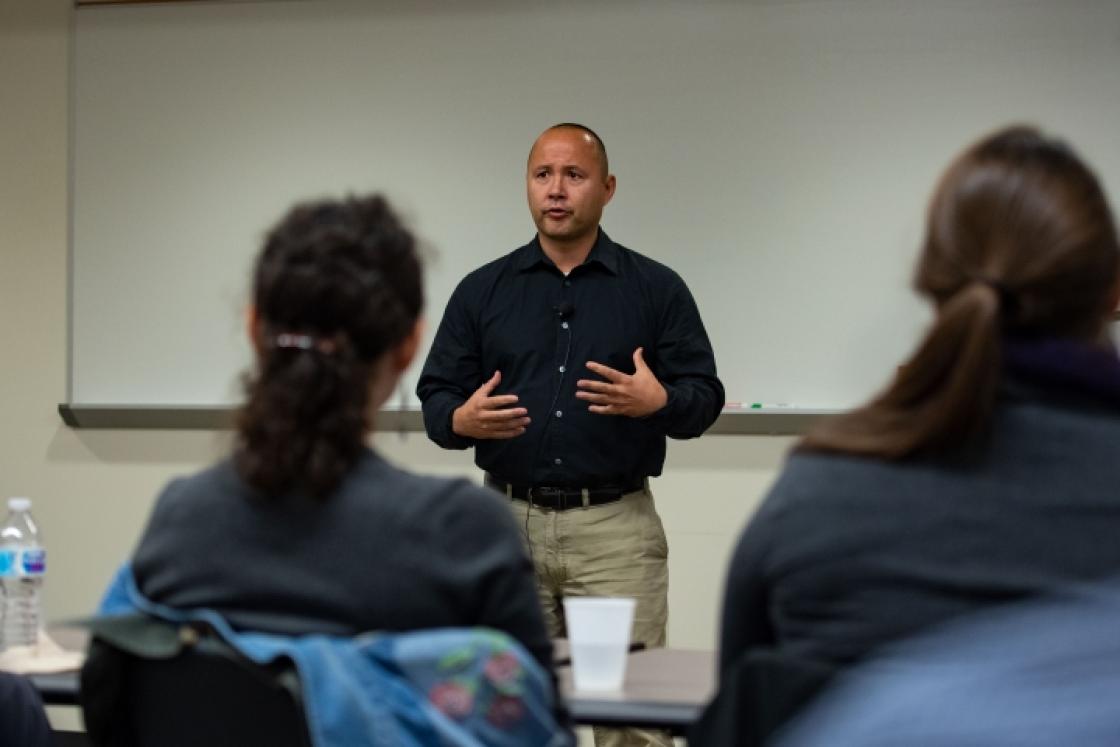LECTURE ONE: THE CRANBROOK ESTATE AND THE HISTORY OF THE REGION’S INDIGENOUS COMMUNITIES
A Series of Three Live Virtual Lectures and Conversations
Presented by Cranbrook Center for Collections and Research
Guest Speakers: John P. Bowes and Eric Hemenway
Hosted and Moderated by Gregory Wittkopp, Director, Cranbrook Center for Collections and Research
Admission is Free and Open to the Public
Registration Required – Zoom Link is Password-Protected

In the traditional history of Cranbrook, the community begins when our founders, newspaper publishers George Gough Booth and Ellen Scripps Booth, bought a “run-down farm” in 1904. By the late 1920s, the Booths had not only transformed this farm into an incomparable country estate—with a manor home designed by Albert Kahn surrounded by forty acres of terraces and gardens—but also conceived a series of six educational and cultural institutions, the basis of today’s Cranbrook Educational Community.
That farm, however, was on land that less than a century earlier had been ceded by the Odawa (Ottawa), Ojibwa (Chippewa), Wendat (Wyandot), and Potawatomi Nations in the 1807 Treaty of Detroit. With a focus on reclaiming lost, forgotten, and stolen stories, this lecture explores the history of the Indigenous communities around the Great Lakes and in Oakland County and examines how the Cranbrook property and surrounding region were used prior to the arrival of white traders and settlers from Europe.
John Bowes will present the history of Federal “Indian removal” policies from the first half of the nineteenth century, which allowed the United States to claim and define the land that become Michigan—first as part of the Northwest Territory (1787), then as Michigan Territory (1805), and finally as the State of Michigan (1837). While the narrative arc of Indian removal—more accurately described as forced relocations—often begins with President Andrew Jackson’s Indian Removal Act of 1830 and follows the Cherokee “Trail of Tears” from the South to lands west of the Mississippi River, Bowes will confront the more complicated history of northern Indian removal. With a focus on the experiences of the Odawa and Ojibwe in Michigan Territory, he will analyze the historical context and choices that enabled some Indian communities to avoid relocation further west.
Eric Hemenway will delve into the two-thousand-year history of the Indigenous peoples in the region we now describe as Southeastern Michigan. From the perspectives of the Anishinaabek—including the Ojibwe, Odawa, and Potawatomi, all of whom share a common language group—he will discuss their way of life before the creation of the United States and the indelible societal changes brought about by Federal and State treaties and policies in the 1800s. As a vivid example of the pre-contact presence of Indigenous people in Michigan, he will describe his work with Cranbrook Institute of Science to repatriate the remains of sixty Indigenous people—likely the population of an entire village, unburied in the 1890s during a road construction project in Oakland County.
Guest Speakers:
- Dr. John P. Bowes is Professor of History at Eastern Kentucky University and Chair of the Department of History, Philosophy, and Religious Studies. He is the author of five books including Exiles and Pioneers: Eastern Indians in the Trans-Mississippi West and, most recently, Land Too Good for Indians: Northern Indian Removal. As a consultant, Bowes has advised the National Museum of the American Indian; as an expert witness, he has worked on behalf of the Saginaw Chippewa Tribe of Michigan and the Little Traverse Bands of Odawa Indians. For more information, please visit Bowes’s EKU website.

- Eric Hemenway is the Director of Archives/Records for the Little Traverse Bay Bands of Odawa Indians, Harbor Springs, Michigan, where he collects and curates historical materials pertaining to LTBB Odawa. His experience includes working under the Native American Graves Protection and Repatriation Act (NAGPRA). Hemenway, who identifies as Anishnaabe, is a past board member for the Michigan Historical Society, Michigan Humanities Council, National NAGPRA Review Committee, and Emmet County Historical Commission. He currently sits on the Michigan Historical Commission. For more information on the LTBB Odawa, visit their website.

About the Bauder Lecture Series
Unsettling Landscapes at Cranbrook represents the fifth installment of the Center’s annual Lillian and Donald Bauder Lecture Series. Established in 2016 through a generous gift from Cranbrook President Emeritus Dr. Lillian Bauder and her late husband Donald Bauder, this endowed lecture series allows the Center to bring to campus speakers of national significance whose work intersects with the history of Cranbrook and its legacy.
The inaugural Bauder Lecture in 2017 brought to Cranbrook author David Sax for a conversation about his book The Revenge of Analog: Real Things and Why They Matter (2016). The second lecture in 2018 featured Columbia University professor of art history and MoMA curator Barry Bergdoll, who told the story of Frank Lloyd Wright’s career and the successful transfer of Wright’s archive from Taliesin to New York. During the third lecture in 2019, Tim Whalen, the John E. and Louise Bryson Director of the Getty Conservation Institute in Los Angeles, presented five of the Institute’s multidisciplinary projects and their ongoing role in the conservation of the world’s cultural heritage. Most recently during the fourth lecture in 2020—the Center’s first virtual lecture after the onset of the global Covid-19 pandemic—Brendan Cormier, a Senior Curator at the Victoria and Albert Museum in London, discussed his groundbreaking exhibition, Cars: Accelerating the Modern World.
A visionary leader, Dr. Bauder served as Cranbrook’s President and Chief Executive Officer from 1983 to 1996, a period during which she not only developed Cranbrook’s first community-wide strategic plans but also created a master plan that ultimately led to the building of the Vlasic Early Childhood Center, the Williams Natatorium, the Academy of Art’s New Studios Building, and the expansion of the Institute of Science. In 1996, Dr. Bauder became Vice President of Masco Corporation, a position she held until she retired in 2007. A 2014 recipient of Cranbrook’s prestigious Founders Award, Dr. Bauder now resides in Columbia, Maryland.
Additional Information
On the Friday prior to each of the lecture dates, registered participants will receive an email with instructions on how to join these virtual experiences; a reminder will be sent one hour prior to the start of the lectures. Each link is unique, and advance registration is required for all participants. The lectures will begin promptly at their scheduled times and will be followed by a ten-minute Q&A session. The Center’s virtual auditorium will open fifteen minutes before the lectures begin for informal conversation and to permit participants time to test their Zoom connection.
For additional information, please send an email to center@cranbrook.edu or leave a voice message at 248.645.3307. The Center’s regular virtual office hours are Tuesday through Friday, 10am to 5pm.
Banner Image (from left to right): Gregory J. Fioritto, Eric Hemenway, John P. Bowes, Mika Kennedy, Thomas J. Sugrue, and Bonnie Clark. Photographs courtesy of the speakers.
Map of “Indian Land Cessions” from the Eighteenth Annual Report of the Bureau of American Ethnology to the Secretary of the Smithsonian Institution, Part 2, 1896-1897, United States Government Printing Office. Collection of Smithsonian Libraries. The 1807 Treaty of Detroit ceded the green-colored portion of this map, including what is now Detroit and Southeast Michigan.
Book Cover Image Courtesy of the Speaker.
Eric Hemenway photograph published online on Nature Change, January 4, 2019, with a YouTube video featuring Eric Hemenway.
